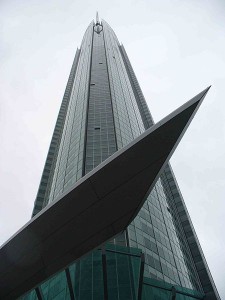To some, it might not seem like the most hazardous job in the world, but being a window cleaner does involve a lot of risk. Merely cleaning ground-floor windows is fairly risk-free, however in most cases, workers within this profession have to scale entire buildings to make sure that every window pane looks spotless.
Back in the day, window cleaners very rarely had to clean any building more than three storeys high. However, as skyscrapers, tower blocks and modern glass-fronted offices became more widespread, so did the number of difficult jobs for window cleaners. In extreme cases, some jobs involved scaling heights of over 500 feet, which can be especially challenging if it is your first day on the job.
Material world
Today, height isn’t the only challenge that window cleaners face. Many modern high-rise buildings are covered almost entirely in glass. This means that they have to clean a larger surface, which requires greater mobility.
At the same time, glass-fronted buildings are also more difficult to hold on to, meaning that the safety of cleaners when working on such structures is even more questionable.
The Empire State Building is a prime example of a glass-fronted skyscraper which can be a nightmare to get cleaned. That, coupled with its impressive height, makes it one of the most dangerous buildings on earth that a window cleaner could possibly work on. A lack of friction on the surface means that cleaners have no choice but to use a harness.
Strings attached
In order to scale large buildings, window cleaners tend to use:
- (For buildings that are no taller than four storeys); A really long ladder
- A harness for really tall buildings that don’t have straight, flat surfaces
- A large suspended scaffold for some skyscrapers that’s erected at the top of the building and moved up and down when needed by someone at ground level
All three are, with supervision, safe to use when everything has been checked. Unfortunately, there’s still an inherent risk in this form of work, with the danger of plummeting hundreds of feet to the ground, should the harness or scaffold used be unstable or insecure.
